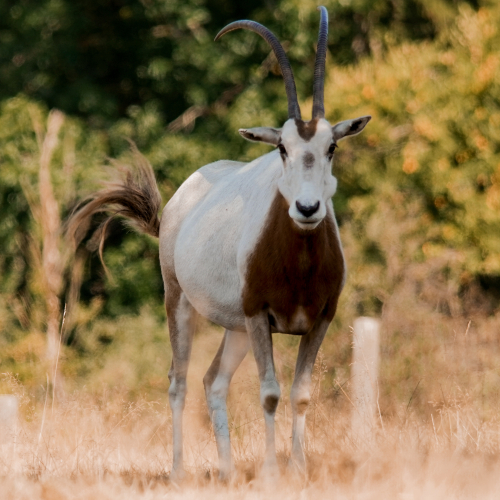Common name: Scimitar-Horned Oryx
Scientific name: Oryx dammah
Conservation Status:Endangered
Previously extinct in the wild, the conservation efforts of Zoos and wildlife biologists across the globe have helped reintroduce these species into Chad, Africa.
At the zoo: Onyx (female, 15y), Osha (female, 13y), Olive (female, 8y), Octavia (female, 6y), Oberon (female, 3y), Odesa (female, 1y), and Oakley (male, 1y) - you can find them, along with their good friend Nancy nilgai at the SW corner of the zoo.
Habitat:
Reestablished in Chad, Africa, oryx are well adapted to living in hot desert environments, shrublands, and savannahs.
Diet:
In the wild, Scimitar-Horned Oryx will eat grasses, plants, herbs, roots, bulbs, foliage and sometimes fruit.
Median Life Expectancy:
11 - 15 years
Biology:
Scimitar-Horned Oryx are mostly white with reddish-brown necks and brown/black marks on their face. They have long curved horns that can grow to be several feet long, with both males and females having horns. Their large hooves allow them to walk on the sand.
The scimitar-horned oryx has been considered extinct in the wild since the 1990s due to a combination of habitat loss, over-hunting, and competition with livestock. In 2009, multiple accredited zoos and organizations launched a historic reintroduction effort, and the first group of animals were released in 2016. The program saw true success when young calves were born in the wild later that year. Continued conservation efforts must focus on finding more suitable habitats and protecting them as wildlife reserves.
Fun Fact:
Did you know that Scimitar-horned oryx can raise their body temperature to 46 degrees Celsius to avoid sweating and losing water!?



